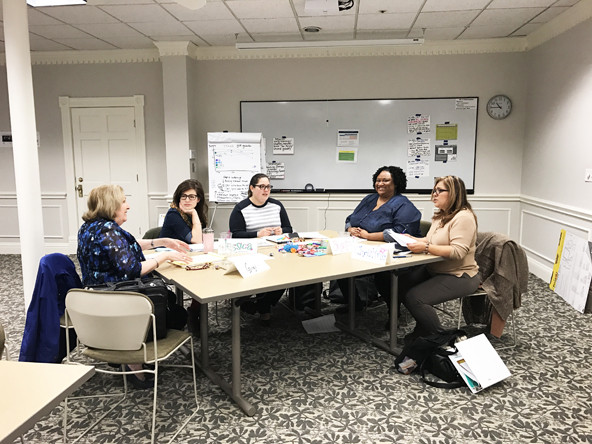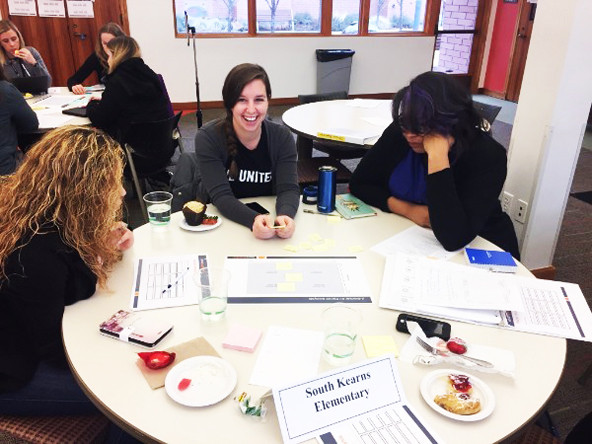It’s easy to see why collective impact—the commitment of a group of important cross-sector actors to a common agenda for solving a specific social problem—caught fire in 2010. During an economic downturn, when few new resources were available, a voice said there was a way to do more with what we already had. The concept offered hope for achieving results at the scale we desired, even though we were feeling constrained. And thank goodness. Collective impact both validated work that had been underway for years and prompted innovative efforts to address complex social challenges. It gave a name to work that goes beyond traditional collaboration to understand the impact of working together in measurable ways, generating a host of new insights that would not have emerged otherwise.
But for all these benefits, as numerous articles have rightly noted, collective impact is not without significant flaws. Among them, the original article about it—which outlined conditions for collective impact, drawing from the success of a local cradle-to-career partnership in Cincinnati and Northern Kentucky—was overly technical, focusing on turnkey solutions instead of examining the adaptive challenges that can impede progress, such as how to build ownership among all partners for change, especially community members. The best example is the idea of a backbone organization—the organization and staff that coordinates collective impact efforts. Most people believed backbones could achieve collective impact on their own, not realizing that their role was supporting community leaders and members to use data of all kinds together to change everyday behavior.
All the attention from the article led to the dramatic expansion of the StriveTogether Cradle to Career Network, a national movement to accelerate progress and sustain success in education, to more than 100 communities working to emulate the story the article told about Cincinnati. But when we looked in the mirror, we realized the narrative was overly sanitized. In our work at StriveTogether to provide coaching, connections, and resources to local partnerships that are working to measurably improve outcomes from cradle to career, we needed something more rigorous to ensure that local efforts were leading to tangible results.
 With StriveTogether team members facilitating, the Commit! Partnership in Dallas is convening three place-based cohorts to work toward achieving measurable results related to school readiness and early-grade reading (photo credit: StriveTogether)
With StriveTogether team members facilitating, the Commit! Partnership in Dallas is convening three place-based cohorts to work toward achieving measurable results related to school readiness and early-grade reading (photo credit: StriveTogether)
Fortunately, through a partnership with Living Cities and KnowledgeWorks, a collaborative of foundations and financial institutions, we were able to build on a basic framework we started in 2009 to understand how to move from theory to action. Drawing from real-world experience, the most dedicated communities in the StriveTogether Cradle to Career Network locked arms to refine a set of fundamental milestones for how this work evolves. A methodology emerged that acted as a rubric for quality collective impact. StriveTogether’s Theory of Action set higher standards and required that network members to do more than just meet around a new vision; partnerships agreed on shared results, set measurable targets, and disaggregated and tracked outcomes data at least annually to share accountability for improving population-level results.. This raised standard resulted in culling the network from more than 100 members to the 49 member communities that met newly established baseline entry requirements.
Are you enjoying this article? Read more like this, plus SSIR's full archive of content, when you subscribe.
But the most important decision made by community partnerships in the network was everyone’s commitment to track six core outcomes, from kindergarten readiness to postsecondary completion. The local partnerships determined they would only recognize a peer as a “proof point,” or exemplar of true systems change, when there was clear evidence that a majority of outcomes were improving because of partners’ individual and collective efforts. This decision changed the focus of the network, from debates on the process to the original intent of this work: achieving results at scale.
 Teams convened by Promise Partnerships of United Way of Salt Lake evaluate factors using a quadrant map as part of the StriveTogether Impact & Improvement Network on chronic absenteeism. (photo credit: StriveTogether)
Teams convened by Promise Partnerships of United Way of Salt Lake evaluate factors using a quadrant map as part of the StriveTogether Impact & Improvement Network on chronic absenteeism. (photo credit: StriveTogether)
This singular goal has been the StriveTogether Cradle to Career Network’s focus since it was founded over a decade ago. All the lessons garnered to date—drawn from a willingness to transparently “fail forward”—have led us to one critical driver of success for achieving results at scale: the capability of partners to use data constructively—leveraging local and national data, along with the lived experience and expertise of community members—to manage change by individuals and institutions.
Over the last five years, we have been testing new and different ways to build capability across the StriveTogether Cradle to Career Network, which has grown again—from the 49 member communities in 2009 to 70 today—as others work to meet the higher entrance standards. As we refine how to train and coach partners, examples are emerging for how individuals and institutions can work better together to achieve complex and sustainable change from cradle to career. The approach we have landed on is grounded in the competencies of results-based leadership and our Theory of Action’s four principles: engaging the community, eliminating locally defined disparities, creating a culture of continuous improvement, and leveraging existing assets. The process of building capability in communities tailored to their unique individual needs follows these steps:
- Clarify shared, measurable results important to community partners.
- Identify audiences who need to be involved in working to achieve the result.
- Determine skills and competencies different partners need to take effective action.
- Design teams of leaders and practitioners and support them in ongoing, experiential learning that can strengthen and improve their current work.
This process is not new. It draws on the wisdom of decades of pioneers in continuous improvement and change management—including work pioneered by the Institute for Healthcare Improvement at the Cincinnati Children’s Hospital Medical Center and refined in partnership with the Annie E. Casey Foundation. Here are our specific lessons learned from training and coaching more than 200 leaders and practitioners in 30 communities across 23 states:
- Acting quickly to incorporate new learning into daily practices leads to better results. Community leaders and practitioners must focus on achieving measurable results while building capability. This requires that leaders integrate learning quickly by using real-time work as the laboratory for building skills and competencies. The focus is on learning by doing, testing interventions, and course-correcting along the way. Our work with a national cohort of cross-sector teams from six communities, for example, helped 30,844 students complete the Federal Application for Financial Student Aid (FAFSA)—an important factor in driving increased college enrollment, particularly for students from low-income families who need help with tuition costs. The communities did this by running rapid, continuous improvement cycles—working intentionally to “plan, do, study, and act” each month to test specific interventions and monitor progress over eight months. In one case, a high school in Portland’s All Hands Raised partnership tested the completion of FAFSA forms in economics classes instead of after-school programs and saw a 12 percent increase in completion, on which it was able to build over time.
- Highly effective teams—not heroes working in isolation—get better results. We cannot persist on the “hero-ing” of individual charismatic leaders driving change in communities. Teams of partners learning and testing are exponentially more powerful. But getting better results requires nearly universal buy-in. A recent study decried the failure of most employee training efforts to improve organizational performance because people quickly revert to old ways of doing things. Even when people leave trainings feeling motivated to act differently, most are unable to apply new knowledge in the workplace. This is because it is difficult to alter deeply entrenched behaviors unless multiple leaders are advocating for change. By equipping teams of leaders and practitioners with a common language and approach to move from talk to action over the course of many months, allies can work together to influence the culture and behavior of institutions and systems. After one team from Dallas County took part in a StriveTogether learning cohort and saw the results of applying collaborative, continuous improvement principles, for example, the participants began working together to integrate lessons learned throughout the school district’s central office.
- Leaders and practitioners need different skills and competencies. We must recognize that leaders and practitioners play different roles in achieving a given result. Thus, different trainings need to accentuate different skills and competencies. System leaders, for example, need certain competencies to negotiate the reallocation of resources in highly charged political environments, while practitioners need to focus more heavily on skills that can help them refine and improve strategy implementation on the ground.
- Adaptive challenges call for customized support. There is no cookie-cutter solution for how to build capability. We have learned to tailor support based on the emerging needs of community partners. The list of challenges that partners must address when working to achieve measurable results include:
- Managing resource allocation across multiple authorities
- Empowering partners to access and use data for improvement
- Structuring productive discussions and actions related to race, class, and culture
- Influencing leaders and practitioners across hierarchies and sectors concurrently
- Authentically engaging community voice to interpret and act on data
- Navigating power dynamics and conflict
- Limiting time spent planning, and encouraging frequent testing and learning
We have adapted the Breakthrough Series Collaborative approach—short-term, networked learning systems bringing together cross-sector teams to seek improvement in a focused area—and are creating results-oriented, tailored learning opportunities for teams that uncover and address challenges in real time. For example, partners from school districts, nonprofits, and cradle-to-career partnership staff broke down the steps needed to improve attendance rates, involving students and families in strategy discovery and design to uncover true adaptive challenges like those highlighted above. Based on their learning, they co-created and refined new, previously untested solutions, such as increasing access to flu vaccines in creative ways to prevent illness-related absences in San Antonio, Texas.
These are just a few lessons we hope can help inform others working on collective impact approaches. No single training approach or new insight will be the panacea. But we can expedite the timeline of impact by capturing these and other emerging lessons, and applying and improving on what we have learned in real time.
Martin Luther King, Jr. noted: “The arc of the moral universe is long but bends toward justice.” Accordingly, the path to achieving the true intent of collective impact—results at scale—is longer than anyone would hope. But we are making significant steps toward figuring out the right path forward, and there has never been a more critical time for community leaders across the country to come together and find the best possible ways to meet the ever-changing needs of children, families, and communities.
Support SSIR’s coverage of cross-sector solutions to global challenges.
Help us further the reach of innovative ideas. Donate today.
Read more stories by Jeff Edmondson & Parvathi Santhosh-Kumar.

